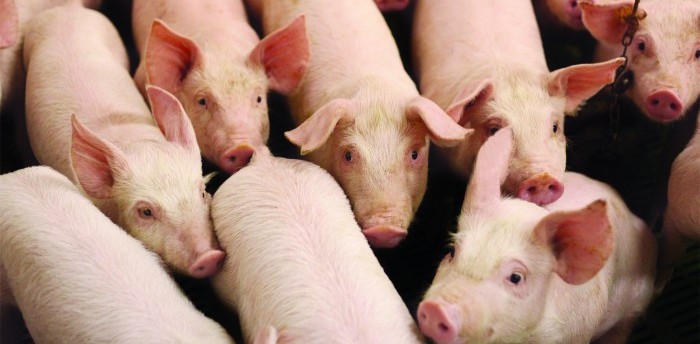Global pig production growth is stalling as consumer inflationary pressures grow, according to the latest Rabobank quarterly pork report.
Pork production across the world is forecast to be 2% lower this year, with minimal growth, if any next year, as pig producers grow cautious as global uncertainties rise, including consumer purchasing habits. With inflation outpacing wage growth, lower real wages are expected to negatively impact protein consumption in the last quarter of 2022 and the first half of 2023, the report forecasts.
Historically, as macroeconomic conditions soften, pork does better in most markets than many more expensive protein alternatives. However, in the current conditions, lower consumer confidence is expected to impact global pork prices.
Value-conscious consumers are already seeking out lower-value cuts, trading down from branded to private label alternatives at retail, and limiting foodservice purchases, adding further weakness to premium product markets, the report says.
In anticipation of some seasonal demand strength, processors around the world have built inventory to satisfy a modest rebound in Q4 2022, but holiday sales will test the market’s resilience and its ability to absorb premiums, Rabobank analysts say.
Lower GDP growth expectations in 2023 will limit market demand, and this is expected to slow herd-rebuilding efforts, and impact trading volumes in the remainder of this year and into next year.
In the third quarter of this year, higher pork prices in key exporting nations limited pork’s competitiveness. However, pork shipments to most markets were relatively strong through the third quarter, with local supplies insufficient to satisfy demand in key markets in South Korea, Japan, and Mexico.
Disappointing shipments into China and a lack of clarity around the prospects for improvement given ongoing Covid-related restrictions have forced other markets to absorb the excess.
“Efforts to stabilize production in some regions have been slow due to productivity challenges and consumer uncertainty, resulting in improved trade prospects for 2023,” said Christine McCracken, senior analyst – animal protein at Rabobank. “Moreover, recent price setbacks and government interventions to stabilize food prices could work to strengthen demand.”
Curbed growth
Feed costs remain near record levels globally after disappointing harvests in the US, parts of Europe, and Asia, resulting in near-record-low grain and oilseed inventories and historically high prices.
The acreage of corn and soybeans being planted in the Southern Hemisphere could help ease, but not eliminate, the strain in 2023, Rabobank predicts. Logistics are presenting additional challenges to the market, adding further costs and volatility.
Competition for reduced grain and oilseed inventories and the resulting price increases are compounding challenges producers face from labour and energy costs.
As a result, producers’ growth plans remain muted in most regions, with limited growth in the sow herd expected to curb 2023 global pork production.
“With few prospects for cost relief and limited visibility around the strength of consumer demand given the challenging economic environment in 2023, producers have scaled back plans to add to their herds,” said Ms McCracken.
“Global production is expected to fall 2% in 2022 and see almost no material growth in 2023, with production in key growing regions significantly lower.”
Europe decline
Pork production in the EU-27 and the UK is forecast to continue its decline in Q4 2022, as indicated by the June 2022 pig inventory for. For 2022 overall, Rabobank expects pork production to drop by 4% to 5% on 2021 in, with the largest declines in Poland, Germany, Denmark, and the UK.
This herd contraction reflects increased producer uncertainty, due to rising costs and ongoing losses for processors, given limited pig price increases and cost pressures.
Weaker domestic markets and lower export demand from China are also weighing on pork markets. Pork
production through July 2022 was down by 4.6% YOY and, at the current pace, could end the year below Rabobank’s current estimate.
EU pork exports were 23% down year-on-year through July, with shipments to China down 140,0000 metric tons each month on average over the year.
The difference found its way into markets outside Europe, with the Philippines, South Korea, Japan, and Australia being the top alternative export markets.
In Q4 2022, however, Rabobank expects higher European exports to China compared to 1H 2022. However, high local prices will weaken global competitiveness.
In August 2022, Brazilian muscle meat exports to China surpassed export volumes from Spain, highlighting competitiveness issues in the EU, with availability also a factor, as productivity in Spain was hit by disease pressure and heatwaves.
Resumption of exports to South Korea from countries affected by ASF, following the acceptance of the regionalisation principle, is not expected until 2023, as re-authorising plants for export will likely take some time.
Average EU pig carcass prices remain strong, up 55% year-on-year recently. However, a seasonal decline in prices is expected in Q4, with larger supplies of pigs from Spain expected, but pork demand not expected to improve.




